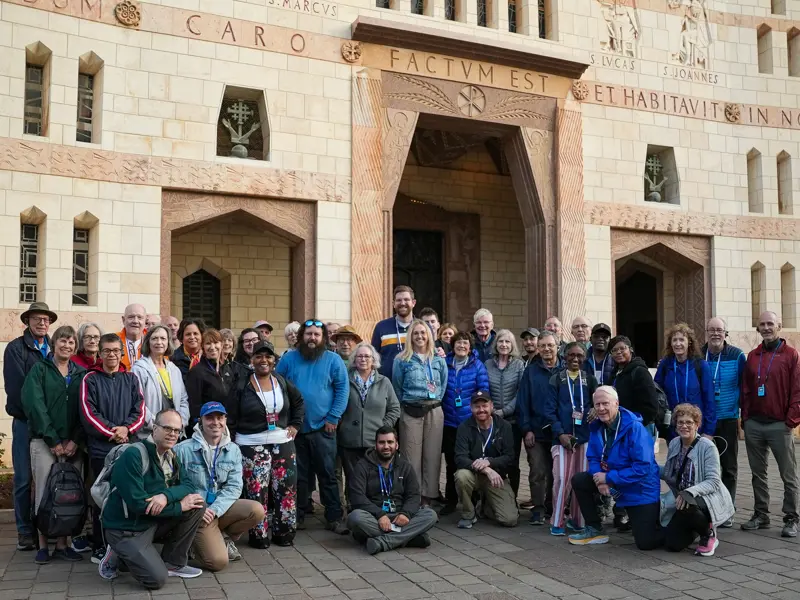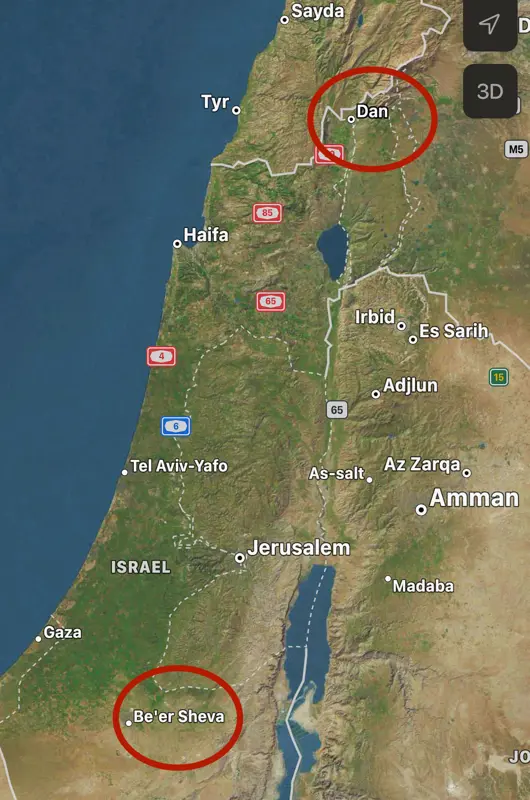Reflections on walking where Jesus walked
The Land is the Fifth Gospel

"I have been interested in attending seminary since I graduated from college but circumstances and timing never seemed right. I had a personal wake-up call in 2018 and 2019 when my father was fighting a losing battle with cancer. After he died, I realized that if I kept putting off my dream of seminary until everything "lined up" perfectly, I would never go. During my father's last two months in an amazing all-volunteer comfort care home, a chaplain made a tremendous positive impact on me and my family. I had thought about chaplaincy several times over the years as a potential vocation. But after being so blessed by that chaplain's ministry in such a difficult time of our lives, I knew 'why' I wanted to go to seminary."
My wife and I are recent empty nesters with two adult sons, and happily attend two sister Free Methodist churches here in Rochester, Community of the Savior and New Hope.


I have read and studied Bible stories from Israel and Palestine since I was a teen and simply couldn’t pass on the opportunity to see the birthland of our biblical and Christian faith. For me, the greatest benefit of this trip is a new, firsthand sense of place, space, climate, and geography within the land. As a result, I’ll surely never read the Bible the same again. Following are a few examples. You might recognize the biblical phrase from Dan to Beersheba. It occurs multiple times in the Old Testament. One can gather its general meaning by looking at a map and locating Dan in the extreme north of Israel and Beersheba way to the south.
But better to visit both and many places in between! We walked in the ancient walled city of Dan and viewed the foothills of Mount Hermon in nearby Lebanon from atop the ruins of its temple built long ago by King Jeroboam (I Kings 12:29–30)! We strolled along the mouth of the powerfully flowing Dan Stream, a primary source of the Jordan River.
Several days later found ourselves on the impressive hilltop ruins of the walled city of Beersheba, 150 miles south of Dan, at the edge of the northern Judean wilderness and the southern Negev wilderness. Here, Abraham made a treaty with Abimelech for water rights to a well for his flocks (Genesis 21). Like several strategically located hilltop fortresses we visited, Beersheba boasted an impressively deep shaft/tunnel system to access water in times of siege. How did they do that back then?! Wow!
The Judean wilderness features prominently in the Bible with David fleeing from Saul and Jesus tempted for 40 days and nights. Prior to the trip, my default picture of this wilderness was green with trees. Not so! Think mountainous arid landscape dominated by, dusty, tannish brown rock. We traveled in the rainy season, but this desert area was still barren except along the wadis (streams) that originated from springs in the hills. Some of the deeper wadis were thick with impenetrable green grasses and trees. From a bird’s eye view, these few lush wadis are still small oases engulfed by an unforgiving desert.
I was fortunate to hike with three fellow pilgrims in the wilderness around En Gedi. “When Saul returned from pursuing the Philistines, they told him, ‘Look, David is in the desert of En Gedi.’ So Saul took three thousand select men from all Israel and went to find David and his men in the region of the rocks of the mountain goats.” (I Samuel 24:1–2) What fun to imagine that we skirted the mountain around which David fled from Saul, or that in one of the many caves we passed, David stealthily cut off the hem of Saul's robe. We saw many ibexes and hyraxes scrambling over the rocks and mountainsides, wonderfully illustrating Psalm 104:18: “The high mountains are for the wild goats; the rocks are a refuge for the coneys.” Indeed!
Mountains are prominent in the Bible and our visit didn’t disappoint in this respect. We had beautiful visuals of the peaks of Hermon, Tabor, Gilboa, Gerazim (we drove and walked its peak!), Ebal, and many others. Mt. Hermon is the highest point on the eastern Mediterranean coast at over 9,300 feet. Yet only 40 miles south is the Sea of Galilee at 700 feet below sea level! While boating on the Sea of Galilee, I “saw” Jesus walking along the narrow roads from the busy towns of Bethsaida and Capernaum in the north towards Tiberias on the western shore, cutting southwest through the prominent Valley of the Doves toward Cana on his way to Nazareth. And on the “the other side” – the lands to the east of Galilee and the Jordan – were the hills of the Gerasene’s where Jesus freed a tormented demoniac.
I could go on and on in this vein about so many more sites from Dan to Beersheba! How grateful I am to God and Northeastern Seminary to have walked in the Holy Land. This was an experience that I will ponder and benefit from for the rest of my life!
The following was written by Northeastern Seminary student Wesley Becker. Wesley is pursuing a Master of Divinity degree and has earned an Advanced Certificate in Chaplaincy and completed one unit of Clinical Pastoral Education at Rochester General Hospital, where he now also works occasionally as an on-call per diem chaplain.
